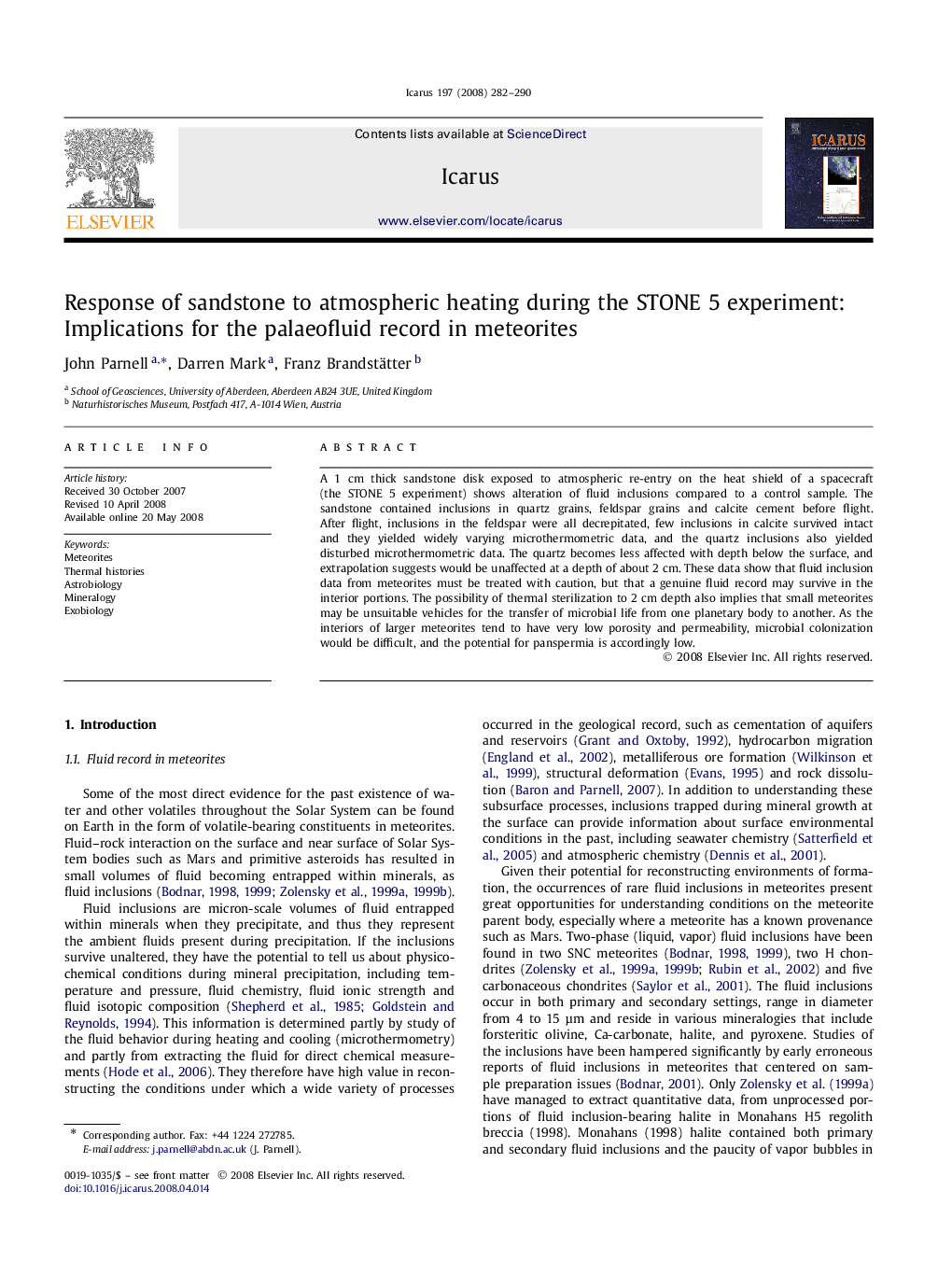| Article ID | Journal | Published Year | Pages | File Type |
|---|---|---|---|---|
| 1775015 | Icarus | 2008 | 9 Pages |
Abstract
A 1 cm thick sandstone disk exposed to atmospheric re-entry on the heat shield of a spacecraft (the STONE 5 experiment) shows alteration of fluid inclusions compared to a control sample. The sandstone contained inclusions in quartz grains, feldspar grains and calcite cement before flight. After flight, inclusions in the feldspar were all decrepitated, few inclusions in calcite survived intact and they yielded widely varying microthermometric data, and the quartz inclusions also yielded disturbed microthermometric data. The quartz becomes less affected with depth below the surface, and extrapolation suggests would be unaffected at a depth of about 2 cm. These data show that fluid inclusion data from meteorites must be treated with caution, but that a genuine fluid record may survive in the interior portions. The possibility of thermal sterilization to 2 cm depth also implies that small meteorites may be unsuitable vehicles for the transfer of microbial life from one planetary body to another. As the interiors of larger meteorites tend to have very low porosity and permeability, microbial colonization would be difficult, and the potential for panspermia is accordingly low.
Related Topics
Physical Sciences and Engineering
Earth and Planetary Sciences
Space and Planetary Science
Authors
John Parnell, Darren Mark, Franz Brandstätter,
